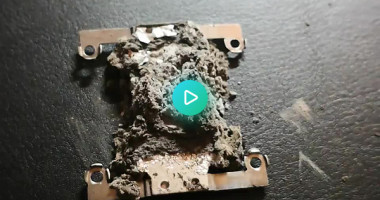Hi, can someone explain to my small brain what reaction this is or what happened? ( imgur.com )
When I was cleaning a heatsink from an older laptop, the aluminum, and I think also a bit of copper, started to disintegrate very quickly and sometimes violently. I used a cleaning solution that was made for removing thermal paste and cleaning CPUs and PCBs. After some time, the only thing left of the heatsink was some grey powder or ash. I have cleaned many heatsinks and CPUs with it before, and this never happened, and I can’t reproduce it.
